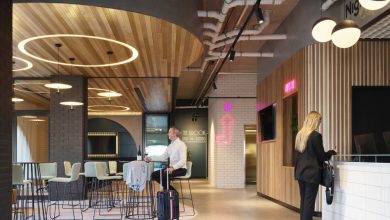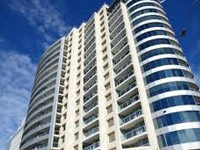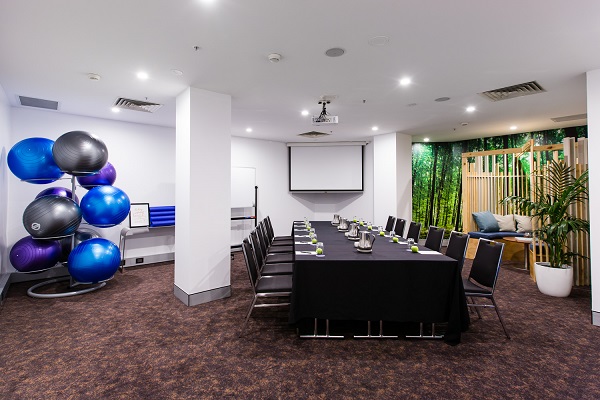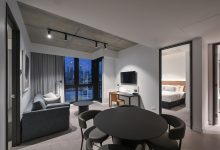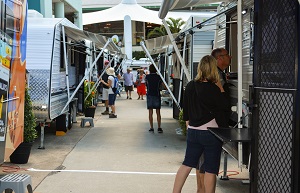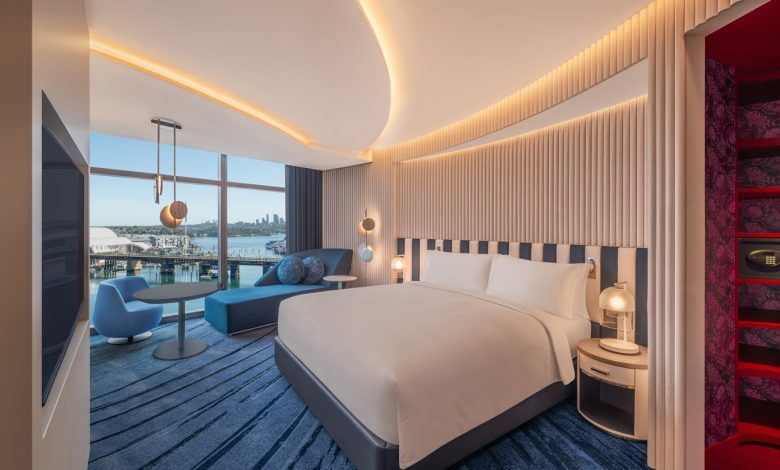
Security and satisfaction are locked in at W Sydney
While the new W Sydney lacks historical data for comparison, it is poised to benefit from reduced energy costs thanks to these advanced systems
Increasingly sophisticated energy management systems are playing a vital role as major hotel chains around the world join the campaign to achieve net zero carbon emissions. Digital locks and fully integrated online systems for room controls not only enhance guest satisfaction and security but also contribute to substantial energy savings for hotels.
According to Michael Benikos, the Managing Director at Assa Abloy Global Solutions Australia, these systems can lead to large energy savings in the hotel due to reduced air conditioning and lighting usage. Recently, the company installed new high-tech door locks on all 588 guest rooms at the W Sydney hotel.
Read this and more in the new summer print edition of AccomNews. Read it HERE
Mr Benikos explained, “The system is highly sophisticated and saves significant amounts of energy by automatically turning off lights and airconditioning when guests leave a room. However, they are seamlessly activated again when a guest returns, with the same lighting and air-conditioning settings as before.
“While the guest is out of the room the system will make sure the temperature does not stray too far away from where the guest left it, so when they return the room is comfortable and energy savings are achieved.”
While the new W Sydney lacks historical data for comparison, it is poised to benefit from reduced energy costs thanks to these advanced systems.
Mr Benikos highlighted a similar technology installation at the Nesuto Docklands Apartment Hotel in Melbourne, where the property achieved a reduction in air conditioning run time of over 40 percent.
He added: “The average energy reduction of air conditioning and lighting usage we observe with hotels adopting this technology range between 20 to 40 percent. With nearly 600 rooms at W Sydney, the overall energy cost savings are substantial.”
Craig Cavers, Director of Engineering and Building Manager at W Sydney, emphasised that Assa Abloy’s system offers enhanced access control throughout the building. “With 588 guest rooms, studio apartments and suites, including back-of-house doors and storerooms, the room key card controls lift and room access. Guests can also use their smartphones if they have a digital key. It’s cutting edge technology,” he stated.
“It’s user-friendly for guests – one swipe of the key activates the air conditioning and opens the blinds to welcome. Moreover, it enhances security as it logs key card swipes, providing a clear record of room access. Additionally, energy-saving features are built-in, with room sensors detecting occupancy and adjusting air and lighting to conserve energy when rooms are vacant.”
As the largest W Hotel globally, W Sydney is one of the biggest hotel projects Assa Abloy has undertaken in Australia and it required some unique adaptions.
Mr Benikos explained: “The property has two different types of air-conditioning systems in its mix of guestrooms and studio apartments; therefore, we adapted the air-conditioning system to the keylocks to suit the different types of accommodation.
“Furthermore, a new lighting system called Kasta was installed in the hotel, which uses wireless connectivity for the light switches. We were able to integrate the Kasta lighting system into the access control and energy management systems to achieve the required outcome for in room lighting and blind control.
The technology installed at W Sydney offers many benefits to both guests and a hotel’s bottom line and that’s why more and more hotels are deciding to use it.
Mr Benikos elaborated on the new technology: “When guests check in, the property management system sends a message to the room lock, signaling the arrival of a new guest. The room is pre-heated or cooled to the perfect temperature and as the guest enters the room, the blinds open, lights come on, and a welcome message is displayed. This is because the door lock recognises it as the guest’s first entry.
“Subsequent entries do not trigger the same ‘wow factor’ welcome, because the door lock understands not to activate the lights or blinds again, but guests always return to the comfortable guestroom environment they left. Room sensors determine occupancy, deactivating lights and air conditioning when not in use.”
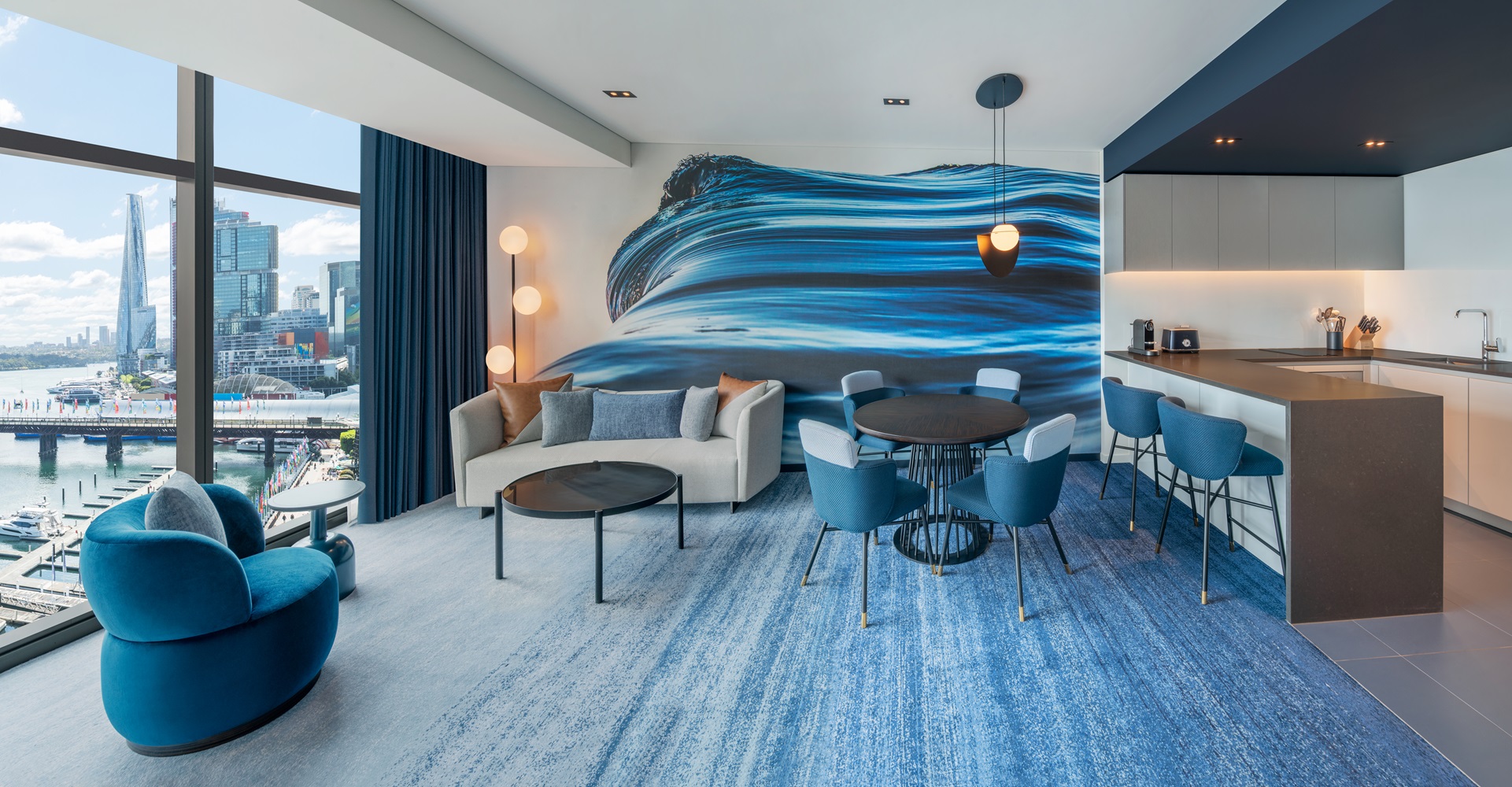
Mr Benikos further emphasised the sophistication of the door lock technology, having the solution online allows for the remote monitoring of entries, tracking every person who enters the room and at what time. It can also remotely deactivate key cards if they are lost.
“This advanced technology ensures a high level of comfort and security for guests, who can have the room set to their preferences every time they enter. It elevates room security to a new level.”
He concluded: “Ultimately, it results in substantial cost and energy savings for the property and contributes to reduced environmental waste.”
Grantlee Kieza OAM has won three Queensland Media Awards, two Australian Sports Commission Awards and has been a finalist for the Walkley and News Awards and for the Harry Gordon Award for Australian sports journalist of the year. In 2019 he received the Medal of the Order of Australia for his writing. You can find more of his work in our AccomNews & Resort News print magazines.
He has written 22 acclaimed books, including bestsellers Hudson Fysh, The Kelly Hunters, Lawson, Banks, Macquarie, Banjo, Mrs Kelly, Monash, Sons of the Southern Cross and Bert Hinkler.

